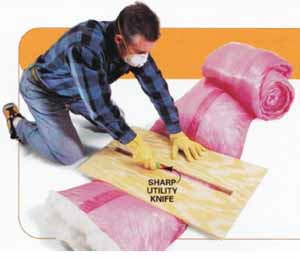What is R-value? It's the key to understanding insulation.
The capacity of an insulating material to resist heat flow various parts of your home and vary by region. Check is called its R-value. The higher the material’s R-value, with your local utility company or read the insulation the better it insulates. Recommended R-values differ for manufacturer’s literature.
Type |
R-value per inch |
Cost |
Pros / Cons |
Fiberglass |
R-3.0 to R-3.8 |
Low |
Pros: Easy-to-install batts press into place; made in standard stud and joist widths; available with Kraft paper facing attached. Cons: Can be irritating to installer’s skin and lungs; susceptible to air gaps during installation. |
Loose fill |
R-2.2 to R-4.0 |
Low |
Pros: Better coverage in irregular spaces and over trusses; can be poured or blown into walls. Cons: Messy to work with; quality can vary; lower R-value; can shift or settle; may need to rent insulation blower. |
Extruded foam |
R-5.2 |
High |
Pros: High compressive strength; great performance underground. Cons: Cover with drywall or other fireproof material. |
Expanded foam |
R-3.8 to R-4.3 |
medium |
Pros: Lowest cost among foams. Cons: Not for underground. Cover with drywall or fireproof material. |
Sprayed urethane foam |
R-6.0 to R-7.3 |
High |
Pros: Makes a tough, seamless thermal and vapor barrier; covers irregular surfaces adds structural strength. Cons: Must be professionally applied. Very expensive. Cover with drywall or other fireproof material. |

Hint: Easier fiberglass cutting
-- For easier cutting, temporarily flatten unruly fiber glass insulation
with a piece of scrap plywood. Just cut a 1-1/2-in-wide slot in the
center of a 16 x 30-in, board, use the slot as a straightedge and get
a clean cut every time.
Next: Installing fiberglass batts
Prev: Introduction to Insulating: Do it right to save money, stay warm